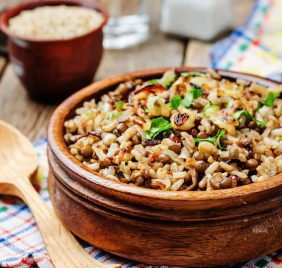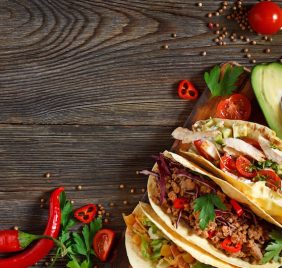Guest Post from Fitness Magazine
Learn nutritious ways to prepare this pantry staple.
Love pasta but want to make it more nutritious? Lighten up linguine, spaghetti, penne and more with these smart strategies.
1. Go the whole (wheat) way.
Unless you’re avoiding gluten, whole-wheat pasta is your best bet. “Whole-wheat pasta provides more healthy carbs, fiber, vitamins and minerals than standard pasta and even some other whole-grain varieties,” says Laura Hartung, R.D., a Boston-based nutrition and fitness consultant. If you’re avoiding gluten, consider pasta varieties made with brown rice or spelt. Quinoa pasta is another smart option because it is high in protein. Be sure to read the package, though, as a cup of cooked quinoa pasta can contain 15 percent more calories than a cup of cooked whole-wheat pasta.
2. Say good-bye to soggy noodles.
Research shows that when pasta is cooked longer than necessary, its carbs break down faster during digestion, which can make your blood sugar spike and then crash. To prevent this, aim to cook pasta until just al dente. To tell when it’s cooked just right, taste a noodle after boiling for about eight minutes. It should be firm, not chalky or mushy.
3. Kick up the protein.
You’ve probably had penne with red sauce for dinner and felt less than satisfied afterward. The reason? The dish lacks protein. “Pasta doesn’t deserve to be vilified,” says Tami Lyon, R.D., founder of Healthy Living Nutritional Counseling and Consulting in San Francisco. “But making it into a complete meal by adding protein is vital.” This will keep you fuller longer because it slows the absorption of carbs into your system. Combine 15 to 20 grams of lean protein, such as 3 ounces of cooked wild salmon or turkey sausage, with 1 to 1½ cups of cooked pasta.
4. Make your own sauce.
Store-bought marinaras might be a time-saver when you’re in a hurry or hungry, but they can be laden with sodium, sugar, oils and preservatives. Luckily, making a batch from scratch can take as little as 10 minutes.
5. Roast for the most.
While you’re waiting for pasta water to boil, you can get a head start on roasting vegetables like fennel, asparagus or mushrooms for your dish. Lightly toss the vegetables with olive oil and salt. Roast at 425°F until tender and caramelized, 15 to 20 minutes, then mix into cooked pasta with some reserved cooking water and grated cheese.
6. “Noodle” around.
No doubt you’ve spotted thin strands of zucchini standing in for traditional spaghetti. Why stop there? Bulk up the variety of nutrients, colors and textures by tossing cooked whole-wheat pasta with ribbons of vegetables like carrots, parsnips or asparagus—or slivers of dark leafy greens including Swiss chard, collard greens or kale.
7. Cheat your way to creamy.
Calorie-laden sauces are what typically give pasta dishes a bad rap. Case in point: an order of fettuccine Alfredo at a restaurant can weigh in at around 2,000 calories, Hartung says. But that doesn’t mean you have to forgo satisfying your creamy pasta cravings. For a velvety sauce without cream or loads of cheese, mix a couple spoonfuls of ricotta or plain yogurt with hot pasta.
8. Go green.
Sneak more leafy greens into your diet by adding them to pasta. Follow this formula: in a large skillet, wilt the chopped leaves of 1 large or 2 small bunches of greens with 2 teaspoons of olive oil and 1 chopped garlic clove; toss with cooked pasta.
©Meredith Corporation. All rights reserved. Used with permission.












